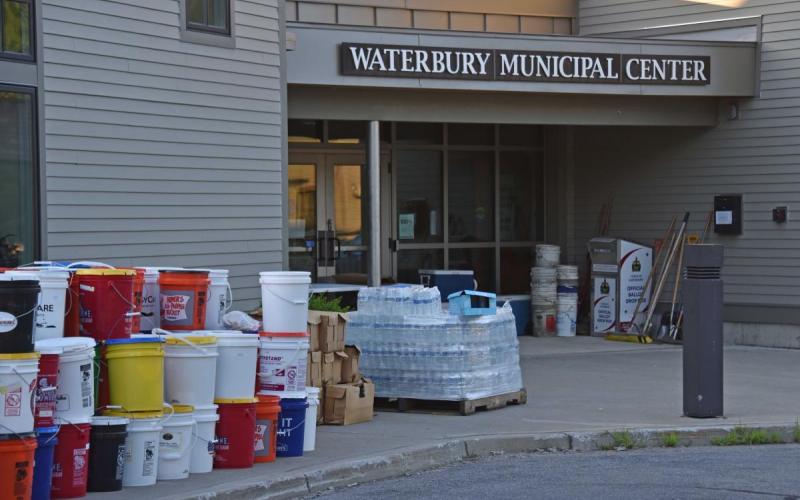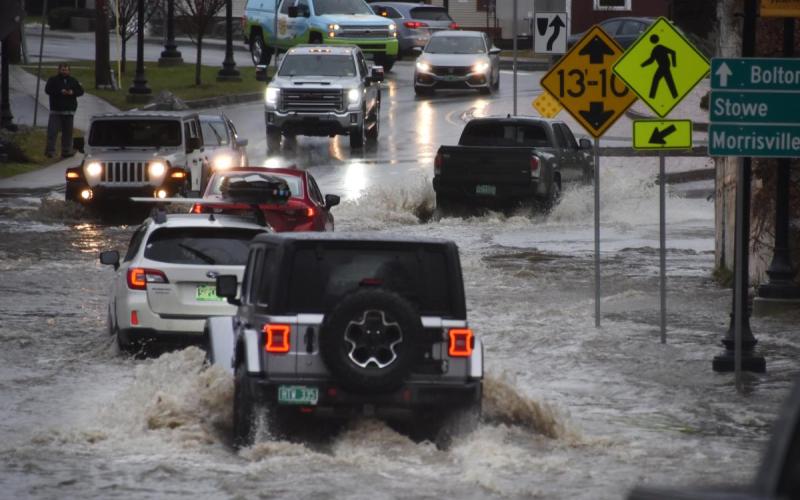
After the Flood Stories of Resilience: Waterbury, Vermont
Slow-moving storms brought catastrophic flooding to our region in July. Record-breaking rain fell on saturated soils, overwhelming waterways and resulting in a federal disaster declaration. The damage to our communities and infrastructure? Extensive.
Damage from the July 2023 floods rival that experienced just 12 years earlier during Tropical Storm Irene. Irene was a wake-up call that brought flood preparedness center stage. What was learned from Irene, and how has that learning been applied? Did-post-Irene improvements reduce July 2023 flood damages? What are we learning as we recover from this summer’s flooding?
In this newsletter series, we will share stories of post-flood learning and resilience. In doing so we aim to inspire hope and action for a flood-resilient future.
The second installment of “After the Flood: Stories of Resilience” takes us to Waterbury, Vermont for a story that highlights the importance of strong local leadership and the value of historic memory in organizing efficient community flood recovery efforts.
Waterbury sits on a section of the Winooski River in central Vermont. Much of Waterbury’s village center is built in the floodplain of the Winooski River – making it susceptible to both major and minor floods. Like many Vermont communities, Waterbury was devastated by Tropical Storm Irene in 2011. Waterbury received 8 inches of rain in 12 hours. Floodwater seriously damaged homes, businesses, the Vermont State Hospital and the many state offices in the hospital complex. Residents in the historic low-lying neighborhoods and those living in mobile homes were the most impacted by the storm, with water inundating first floors and basements. In the wake of this destruction, community leaders worked fast to identify and meet the needs of their affected residents – but the last time Waterbury had experienced a flood of similar magnitude was in 1927.
“There was no one with historical memory to help inform how the community could best organize around a recovery effort.” recalls Tom Drake, a Waterbury resident and the town’s current Flood Recovery Coordinator. “Irene was people totally making it up, but they acted fast and made things happen.”
Led by Waterbury Select Board, Town Manager and Emergency Manager, they mobilized first to ensure the safety of Waterbury residents, working to rescue stranded people and animals. Next came the clean-up. When a community is in the immediate post flood clean-up process, it is critical that water is pumped out of buildings as soon as possible. The longer water sits in a building the more damage it does. Like many Vermont communities, Waterbury needed sump pumps, dumpsters, dehumidifiers, fans, and lots of volunteers. As this was identified, Waterbury leaders pulled together task groups to direct debris clearing operations and organize thousands of volunteers. Within a few weeks, the organization ReBuild Waterbury was created to assist impacted homeowners and businesses.

Twelve years later, when the current Waterbury Select Board members and Town staff saw the forecast for the July 2023 floods, they started to mobilize. They knew high water levels were predicted, which would mean severe flooding, and those who experienced Irene knew what they needed to get organized for the clean-up and recovery effort ahead. When the rain began on July 10th, 2023, the Winooski overflowed its banks, flooding Waterbury’s downtown. While this flooding was not as severe as Tropical Storm Irene, the damage to those within the floodwater’s reach was significant. Waterbury also experienced groundwater flooding in many homes, caused by the inundating rain. But ultimately, the hazard mitigation steps the state and Waterbury took after Tropical Storm Irene reduced the level of damage to homes and businesses.
The Select Board and Town Manager acted quickly. They spoke to former elected officials and retired town staff to understand the priorities after Irene. Acquiring equipment – dumpsters, dump trucks, fans and dehumidifiers – was a priority for community use. Select Board members Alyssa Johnson and Dani Kehlman, along with community member Liz Schlegel, led the effort to establish a system for organizing volunteers. With learning from Irene, and the pandemic, Schlegel knew that making an online form would be the most efficient way to collect information about the community’s needs, and volunteer availability. Once this virtual space was established, town leaders worked to find a physical space for organizing volunteers and supplies. The Waterbury Municipal Office served as this physical home base for volunteers. In Irene, the Town Office had been destroyed by flooding – having this consistent location to work from made a significant difference in organizing volunteers and flood clean-up.
Throughout the month of July, Kehlman, Johnson and Schlegel took the lead on managing volunteer’s daily tasks. Tom Drake joined the team in late July and became the Town’s Flood Recovery Coordinator. With information from their online form, they established daily work schedules matching available volunteers with community members in need. They provided neighborhood level leadership, instructions, equipment, water and snacks for volunteers. Over 1,100 volunteers came to Waterbury to help in flood recovery, an effort which went on for many months. They were also able to stay in regular contact by phone with neighboring municipalities to help them meet their post-flood recovery needs.
“The volunteers are the bright light out of this. They pick you up when they come to help. They help you feel as though you are not alone in it” says lifetime Waterbury resident Skip Flanders.
While Waterbury continued to help community members complete their recovery from the July 2023 floods, leaders started to turn their focus towards long term recovery planning. Then, Waterbury flooded again. A December storm brought floodwaters back into many of the same homes and businesses that were impacted in July. With practice from the summer, and leadership from Schlegel and Drake, Waterbury quickly pulled together resources and volunteers to help their community members once again. Homeowners were well-prepared for the rising waters, and many had made sure that their basements were as empty as possible, so fewer possessions were lost.

Waterbury has established a permanent long-term recovery group entitled CReW (Community Resilience for the greater Waterbury area). The group’s goals are to help people recover from flooding events, help people take mitigating steps to protect against future flooding, and build long-term community resilience for dealing with future disasters. If you would like to learn more about Waterbury’s flood experiences, read their “Flood Updates” posted on the Waterbury Roundabout. If you are interested in learning more about CReW’s mitigation and resilience efforts, reach out via thecrewvt.org.